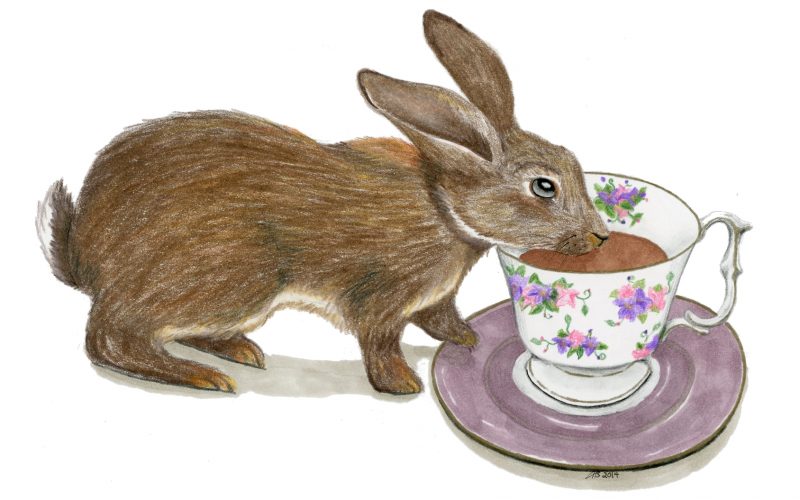Many people know of the famous Beatrix Potter through her delightful children’s books, most notably The Tale of Peter Rabbit. But not everyone knows that she was more than an author and illustrator; she was also a naturalist and excellent botanist, contributing to the scientific community’s knowledge of fungi through her carefully recorded observations and experiments.
Truly a hero of conservation, she persevered through society’s prejudice and demanding rules, succeeding in protecting 4,000 acres of land by the time of her death in 1943. Her weapon of choice against encroaching development: a paintbrush. She would set out on adventures in nature starting when she was a child on holiday with her family, sketching the landscape and producing very good drawings that celebrated country life. Beatrix would spend hours drawing her pet mice, rabbits, hedgehogs, and any other creature she happened upon during her walks.
As a way to earn money, she began drawing Christmas cards with animals as her main subject – in particular, rabbits. Years later, she wrote The Tale of Peter Rabbit for the children of her former governess, and eventually succeeded in publishing it (after much rejection) with Frederick Warne & Co. Her little “bunny books,” as they were called, became the bestselling children’s books of all time.
Yet, her journey as a naturalist was not an easy one. As a woman, society believed her incapable of managing her many farms and properties. Since she grew up in the city, those living in the countryside of England made bets for how long she would last, assuming that she would miss society and disdain the dirt and critters of country life. Yet she defied expectation, excelling at land management and preferring the company of animals and the qualities of country life over the dingy, crowded London streets.
You can practice Beatrix Potter’s method of observing the natural world in the Ozarks and sketching what you see in a do-it-yourself outdoor art studio. First, you might want to play around with various artistic mediums. Find one that fits your own personality and style. For example, you might be more of a watercolor person, if you try out pencil, charcoal and ink and find them not to your liking. If so, check out watercolor brushes that hold refillable water in their handles. Or if paint sets are too messy, try pencils, which are more convenient to transport wherever you go.
Choose a bag or carrying case for your art supplies, and be sure to pack weather-appropriate gear and some snacks. A blind, or camouflaged tent or area of your yard might make watching wildlife easier. Bird feeders are useful at attracting songbirds to sketch. Or make wildflowers your subject – they can’t run away! Even a stroll along city streets can bring you encounters with all sorts of natural friends to draw or paint. And who knows what person will be inspired to do good works after a glimpse of your art, or what scientist will make a new discovery from your explorations.
Amanda Bancroft is a Master Naturalist and volunteers with her husband Ryan for their solar-powered online educational center on how to make a difference with everyday choices at: www.RipplesBlog.org.











